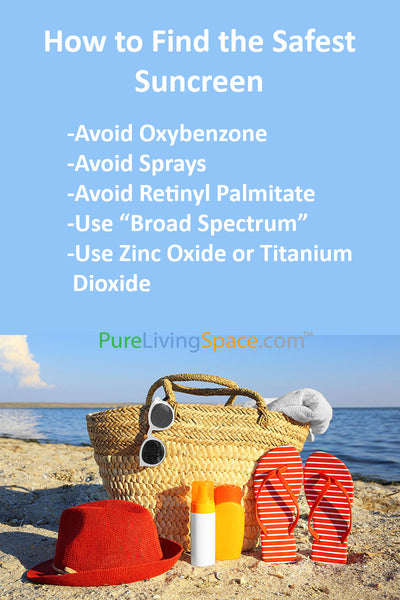
Is Your Sunscreen Safe?
You may not spend much time worrying about sunscreen safety, but maybe you should. The Environmental Working Group (EWG) issued its Sunscreen Guide highlighting the importance of understanding UV-A vs. UV-B rays, SPF gimmicks, and harmful sunscreen ingredients.
Luckily, if you follow a few guidelines, you can still have your time in the sun and protect yourself and your family.
UV-A & UV-B – What’s the Difference & Why Does it Matter?
You’re probably aware that sunlight exposes you to UV-A & UV-B rays. The UV-B rays are the rays that can burn your skin. Sun Protection Factor (SPF) measures the protection against the UV-B rays that burn the skin and cause cancer. The SPF does not measure the protection against UV-A rays which penetrate deep into your body and can cause skin aging and are also implicated in skin cancer.
You can’t rely on SPF alone to get protection from both types of ultraviolet rays. Instead, look for ingredients that will protect you from UV-A & UV-B rays. Choosing the right sunscreen will protect you from effects you can see (sunburn) and damaging effects you can’t see.
SPF – A Misleading Gimmick
According to the EWG, higher SPF values are misleading and are simply a marketing gimmick. An SPF value over 50 leads people to think they are shielded from sunburn and long-term skin damage, possibly resulting in more exposure to ultraviolet rays.
Plus, many people misinterpret the SPF values and believe that SPF 30 is twice as effective as SPF 15. A dermatologist at Northwest University Feinberg School of Medicine explains the ratings. SPF 15 filters 93% of UV-B and SPF 30 filters 97% of UV-B, making it only 4% more effective, not twice as effective. With SPF 50, it filters 98% of UV-B rays, making it only marginally better than SPF 30.
The FDA is considering rules against values over 50 SPF because they are concerned that these higher values may actually increase your risk of skin damage.
What Harmful Ingredients in Sunscreen to Avoid
Some sunscreens contain harmful ingredients. It’s important to read labels carefully. Here’s the short list of formulations to look for and avoid:
- Oxybenzone: Studies show that Oxybenzone is absorbed through your skin and reaches your bloodstream. Some of the research shows it is an endocrine disruptor. Not everyone agrees that Oxybenzone is potentially harmful, but countries in Europe and around the world have banned its use in personal care products. With other less controversial options available, it’s prudent to avoid this substance.
- Spray On Sunscreens: Many people like spray on sunscreens for the convenience. However, the EWG has concerns about inhalation risks. Plus, spray on sunscreens may result in not applying a thick enough coat for sun protection.
- Retinyl Palmitate - Vitamin A: Some studies showed more skin tumors and lesions on animals treated with Retinyl Palmitate and exposed to sunlight. In the last five years, use of Retinyl Palmitate has dropped from 50% to 14% of products tested. Again, not all experts agree that Retinyl Palmitate is potentially harmful. However, with other options available, why risk it?
How to Find the Safest Sunscreen
It’s pretty simple to find an effective, safe sunscreen now that you have the facts about UV-A, UV-B, and SPF, and know which ingredients to avoid.
- Look for “Broad Spectrum” on the label. This indicates that the sunscreen protects against UV-A and UV-B rays. Remember that SPF only measures the UV-B protection, and using a Broad Spectrum sunscreen will give your skin the best protection.
- Find sunscreens with active ingredients Zinc Oxide or Titanium Dioxide. These sunscreens generally do not contain potentially harmful ingredients.
- Avoid sprays, Oxybenzone, and Retinyl Palmitate.
Want to learn more about personal care product safety? Read How to Avoid the Worst Things in Personal Care Products. Worried about nail polish toxins? Read The Easy Way to Avoid Toxic Nail Polish.


